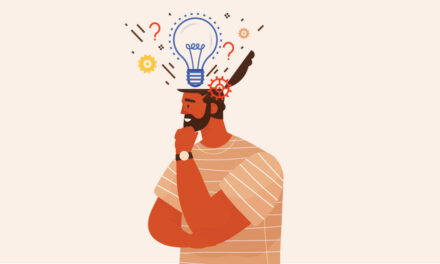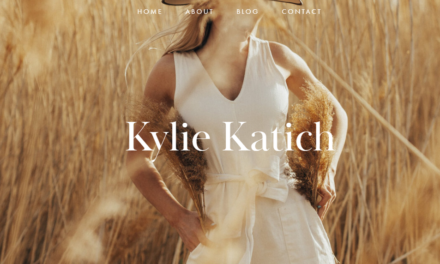The always-on mobile lives we lead have changed our business lives and our personal lives—including the way we think and dream, along with our tastes, habits, and futures.
Today’s evolutionary tale sees homo sapiens approaching “phono sapiens”—we have super quick opposable thumbs and access to almost all of the world’s information in microseconds. We can perform technological miracles or take selfies and send emojis. We are bombarded by notifications, infinite streams and emails, and video auto-play pipes that provoke a dopamine-effect. In fact, we now spend upwards of 5 hours per day on mobile apps—more than we do watching TV.
Our brains are being rewired. We’re forgetting the kinds of things we used to know by heart—such as friends’ birthdays that we now rely on Facebook to remind us of. We don’t commit key facts to memory because we can just Google them. We get easily distracted. How many times have you quickly checked your phone when out to dinner with a friend? We don’t necessarily need to remember everything—handy apps such as Shazam help us find out what that song is, and IMDb does the same for movies, stars, and TV shows. For better or worse, our brains aren’t the only things changing in this hyper-mobile age. Platforms are also morphing to accommodate changing user expectations—and you either keep up or move aside.
From Fast to Super-Fast
The future of mobile and content is about more: more smarts, more speed, more valuable, more personal, more interactive, more predictive, and more authentic—basically, more of everything.
With the rollout of 5G on the agenda in 2019, the mobile experience is undergoing a paradigm change. Digital load speed affects conversion and quality of experience. We have a low threshold for waiting and have grown increasingly impatient. If an app or a site lags, we might give up and take our business elsewhere. Google increasingly indexes for speed via AMPs (accelerated mobile pages). They even pull content up from websites now such as movie times, Wikipedia descriptions, and flight times. With 5G, cities will be smarter, and we will use our mobile device as a remote control for everything.
With next-generation phones and connectivity, 5G promises a seismic enhancement in speed, ushering in a new era of opportunities such as 8K video, high-res multiplayer augmented reality (AR) games, new realities, instant uploads and downloads, and a major change in terms of the amount of content on the internet. This will surely exacerbate our present era of instant gratification, personalization, and impatience with all things on our mobile—including streaming, dating, content, and the delivery of goods and services. And content creators need to be ready.
Video Is Eating the World
From big dippers to circus tents, there are lots of visual metaphors and advice out there for video. Mobile video consumption is growing rapidly. A study from Cisco projects that, by 2020, video will account for 75% of traffic. With auto-play, vertical form factors, and the importance of considering the context of mute play and subtitles, the world of mobile video is always changing.
YouTube—the undisputed leader in online video—knows how important it is to understand context and play to your audience with different types of content. Google’s Playbook for Creative Advertising has some great metaphors and terminology such as, “Bite, Snack, Meal: Feed your target audience. Bite’s the quick-hit messaging, Snack’s the traditional ad length, and Meal’s the kind of long-form content that’s not possible on TV.” Google knows that simply producing great video is not enough. By also understanding algorithms and patterns of consumer behavior, you can unlock true value. And, increasingly, it’s those bites that are important.
Content has always been about storytelling, but these days, stories are just 15 seconds. Dwindling attention spans, combined with the success of stories in social apps, are leading to more ephemeral, shorter-form story content, often in a vertical aspect or 4:5 ratio. Live content is well-suited to these new, shorter formats. Brands build authenticity and trust with impromptu, behind-the-scenes videos that are especially easy to create on mobile devices.
Business Users Can Benefit From Learned Consumer Behavior
Mobile usage is like muscle memory. Leveraging existing behavior is much easier than changing it. For instance, swiping right has been adopted by many apps since Tinder, and floating action buttons have been used widely since Google Maps.
Facebook’s Workplace is a platform that had the potential to turn user behavior into a business benefit—as it can help to boost employee engagement. The company likes to talk about the fact that Workplace can “turn your company into a community.” This is because of the familiarity 2 billion people have with the main Facebook product. Taking this into a B2B space and engaging employees through the newsfeed, Likes, and comments capability is great for business and consumers. Workplace also helps companies by enabling live video to broadcast important messages for remote workers.
TikTok, a Unique and Fast-Growing Opportunity at the Intersection of Mobile and Content
TikTok is an app and fast-growing music community. Also known as Douyin (literally “vibrato short video”) in China, it’s a social media app for creating and sharing videos, as well as live broadcasting. It is unique, hard to categorize, and also derivative—combining aspects of hugely popular apps such as Instagram, YouTube, and Snapchat.
Launched in September 2016, it has expanded. It has more than 500 million monthly active users and has achieved 800 million-plus app installs. Two-thirds of users are female with a young demographic. At the end of 2018, it was the most downloaded app in both the Chinese and U.S. Apple App Stores.
The TikTok mobile app allows users to watch short musical clips, lip-sync to songs, shoot short videos, and edit them with built-in special effects, editing capabilities, AR filters, hashtags, and stickers. All clips have a 15-second time limit to cater to Millennials’ short attention spans. There are a variety of trends within TikTok, including memes, specific songs, and video formats. Duets, a feature within TikTok that allows users to add their own videos to an existing video with the original content’s audio, have led to most of these trends. Top influencers commonly have 20–30 million followers. The app has spawned a phrase for Chinese people who are glued to their customized feeds: “Shua Douyin.”
Brands that want to engage younger audiences, which are increasingly hard to reach through traditional channels, could look at TikTok formats such as in-feed ads, brand zones, pop-up shops with e-commerce, hashtag challenges, AR stickers, and influencer deals to help gain authentic awareness. This will gain reach, similar to Vine artists back in the day and Instagrammers and YouTubers today. The influencers look to monetize via their own merchandise, similar to YouTubers.
As you can see, the evolution of humanity and the landscape of platforms are evolving thanks to new technology and our appetite for new form factors and means of sharing our story. While consumer expectations are always inflating, new opportunities for brands brave enough to try new things open up. The only constant in the mobile era is change.






